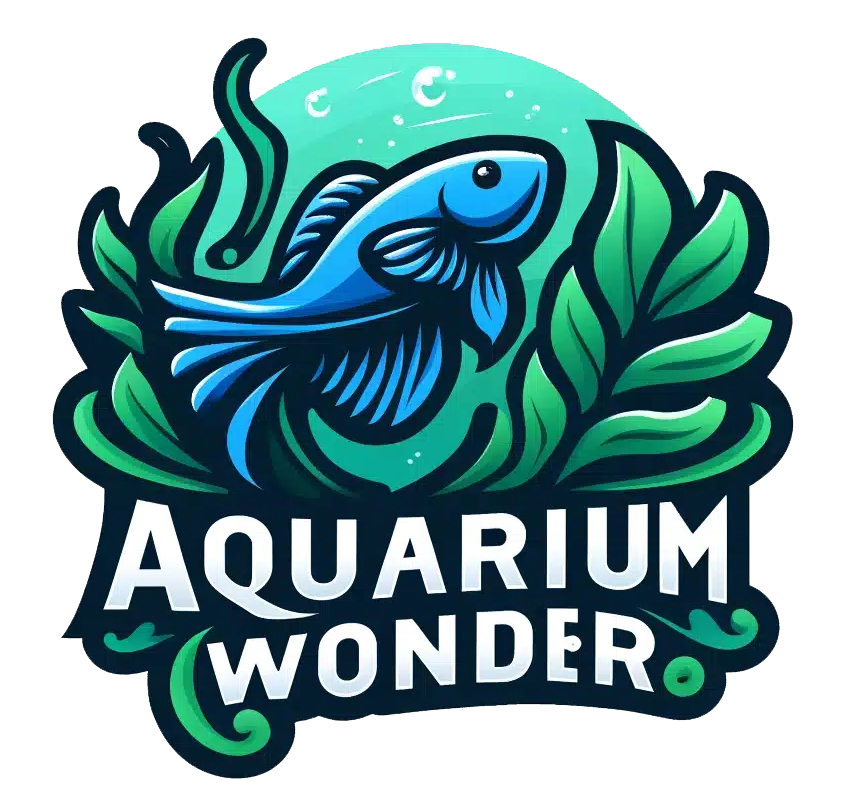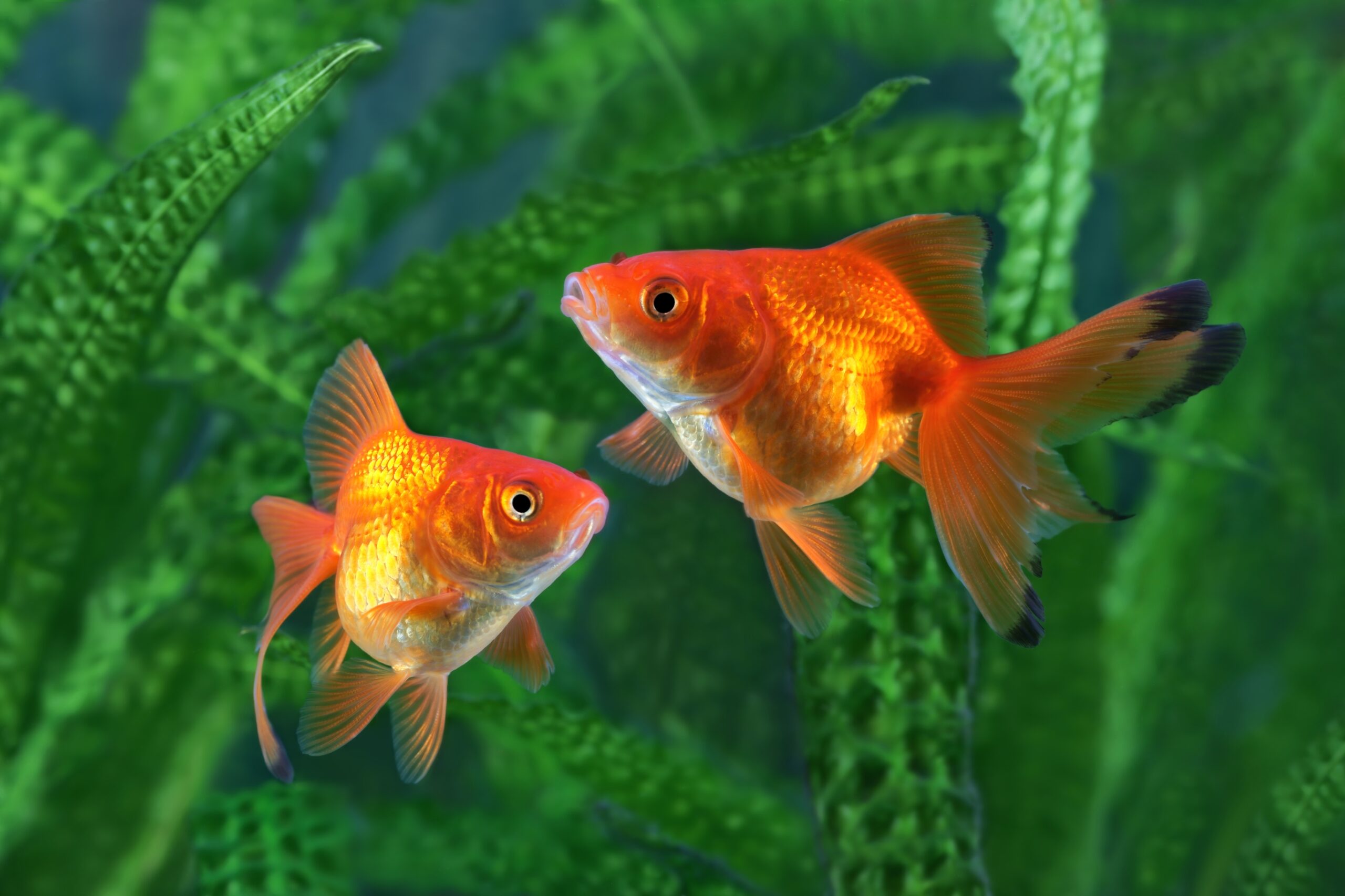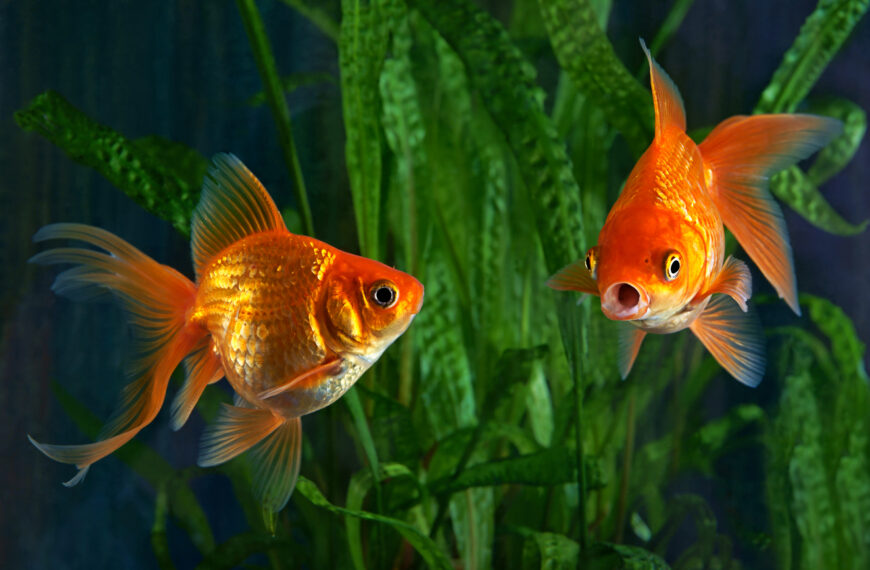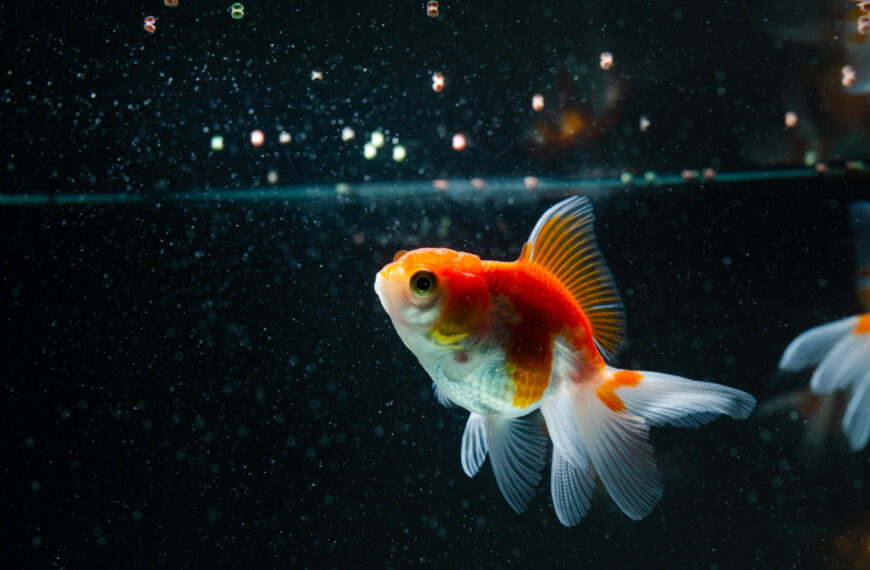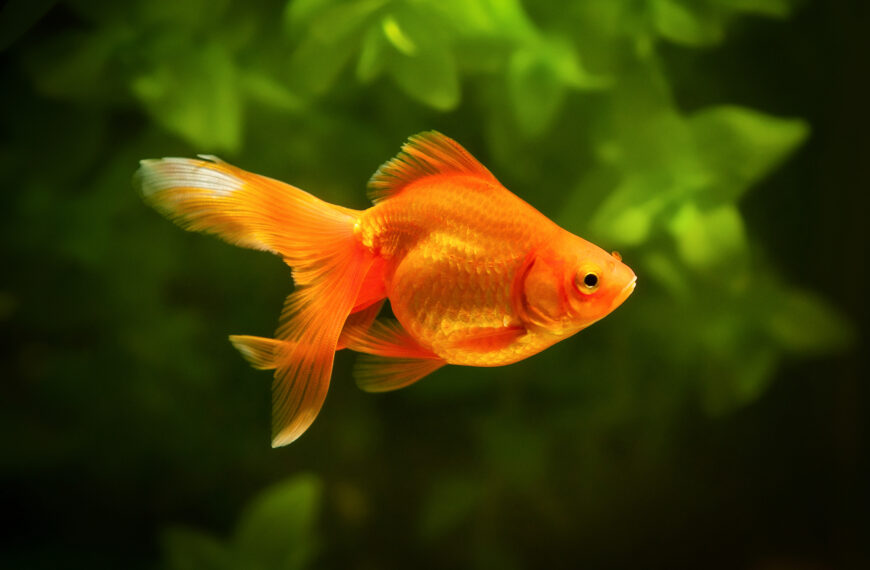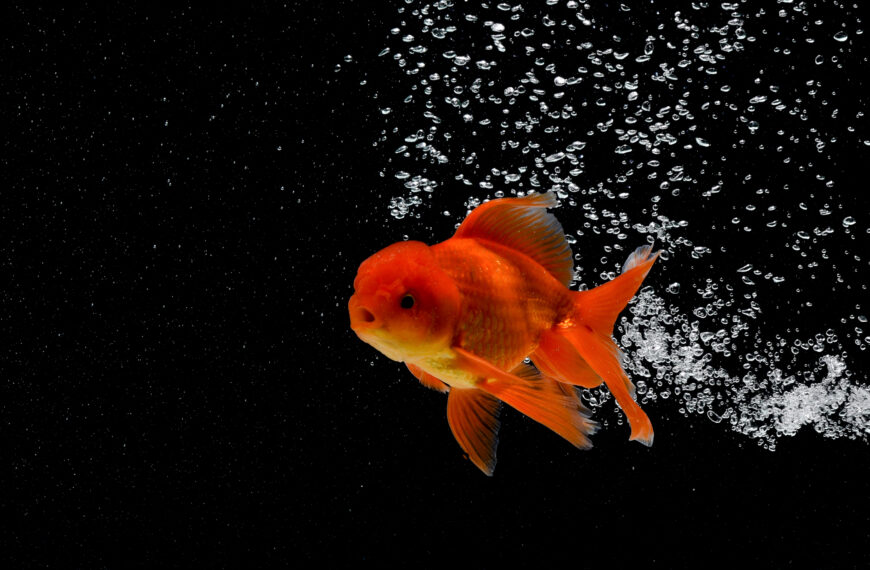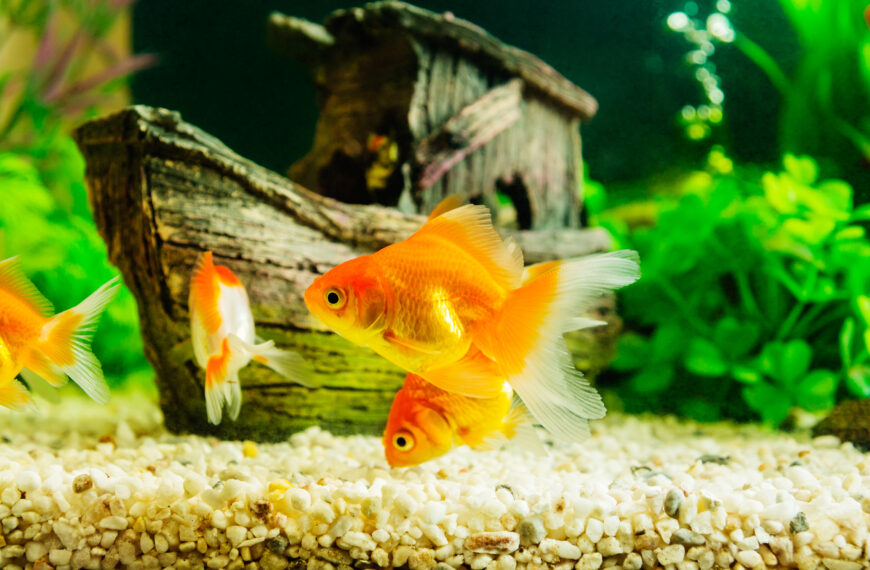Something that I was always worried about when keeping fish is whether goldfish can live in tap water. I heard about people preparing the water they add to the tank and wondered if treating tap water is also necessary for goldfish. So I did my research and here’s what I found.
Quick Answer
It is possible for goldfish to live in tap water, as long as that water is properly treated. Tap water may contain chlorine, chloramine, heavy metals, and various other substances that can be harmful to your fish. These first need to be removed from the water before being put in a fish tank.
Keep reading to find out everything there is to know about using tap water for your goldfish aquarium. We’ll take a look at all of the most common problems you’ll be faced with as well as what the solutions are.
Do Goldfish Do Well In Tap Water?
One of the biggest issues that you will be faced with when using tap water for your aquarium, whether for a goldfish or otherwise, is that tap water usually always contains chlorine or chloramine, and sometimes both.
Chlorine and chloramine are both used as disinfectants to kill a variety of bacteria, viruses, and more. It is designed to make the water safe for us humans to drink.
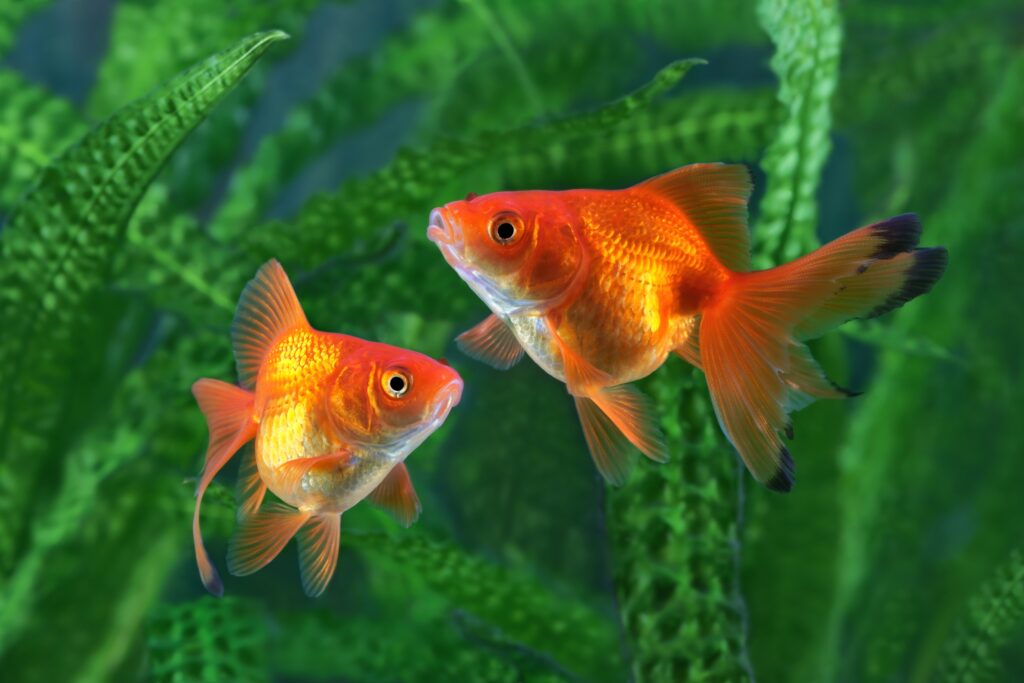
However, although this makes the water safe for us to drink, it makes it very poisonous for fish to live in. Therefore, you need to ensure that your tap water no longer contains chlorine and chloramine before being put in the aquarium.
In terms of chlorine, one of the simplest solutions is to let the water stand out in the open for around 24 hours.
Chlorine will dissipate out of the water after around 24 hours. However, if this is too long for you to wait, you can always use a special water conditioner or dechlorinator that will remove the chlorine from the water.
However, what you need to consider here is that chloramine is not the same as chlorine. Letting the water sit for up to 24 hours will do nothing to remove chloramine. To remove chloramine from the water, you’ll need to use a special chloramine remover.
As far as tap water is concerned, this is by far one of the biggest threats to your fish. Keep in mind that if your goldfish is exposed to high levels of chlorine or chloramine, it will quite literally burn for fish and kill it within a very short amount of time.
Heavy Metals, Pesticides, and Other Contaminants
There are then other substances and contaminants present in tap water which can be poisonous to your fish.
Unfortunately, these things can also be poisonous to you. These include substances such as various heavy metals, pesticides, and other chemicals that may have gotten into the tap water.
Now, there are a variety of water conditioners that you may use to remove some of these compounds from the water.
There are actually plenty of water conditioners that remove both chlorine and heavy metals from the water.
Luckily for you, to remove heavy metals and pesticides from the water, something else you can do is to simply upgrade your aquarium filtration. There are three main types of aquarium filtration, including mechanical, biological, and chemical filtration.
The type of filtration that you need to remove heavy metals, pesticides, and other such contaminants from the water is chemical filtration.
This is generally characterized by activated carbon or charcoal, which has the ability to absorb these substances.
Therefore, having high quality chemical filtration in your fish tank is one of the best ways to ensure that your tap water is not harmful to your goldfish.
Dissolved Mineral Content, Hardness, and pH
Another issue that you may be faced with when using tap water for your goldfish tank is that it does not have the right amount of dissolved minerals.
For the record, goldfish tend to do best in waters that are moderately hard or slightly soft. For those of you who don’t know what this means, hard water is when there are a lot of dissolved minerals in the water, mainly ones such as calcium and magnesium.
Although your fish does require some of these minerals, too much can be detrimental. In terms of general hardness, the levels should be between 150 and 300 parts per million. If we are talking about carbonate hardness, the level should be between 50 and 150 parts per million.
One of the best ways to ensure that your tap water is not too hard is to mix it with either reverse osmosis water or distilled water. These are special types of water that have had the minerals removed from them. There are also special types of filters that you can use to remove minerals from the water before adding them to the fish tank.
On that note, you also needed to keep the pH level of the water in mind, which is the general acidity level. Keep in mind that goldfish require the water to be between 7.2 and 7.6 on the pH scale, which means that the water is very slightly acidic.
Goldfish require very stable pH levels, and those levels need to remain within the range listed above, or else there will be serious problems.
Tap water does not always have the same pH level, so it is vital for you to test it before adding it into your fish tank. If the pH level is either too high or too low, you’ll need to make the appropriate adjustments.
This means that first and foremost, you’ll need some kind of pH testing kit so you can test the water before adding it into the aquarium. You can then use some kind of pH buffer, whether one that will raise the pH or lower the pH, to treat the water as needed. Never add tap water into your aquarium before first monitoring and adjusting the pH levels.
Biological Filtration – The Nitrogen Cycle
What you also need to consider is that your tap water really doesn’t have much in the way of biological filtration, which is very important.
In a regular aquarium, the water is full of beneficial bacteria that serve to break down ammonia, nitrites, and other toxic compounds released by uneaten fish food, decaying plant matter, and fish waste.
Ammonia and nitrites can be very deadly to fish, and even in just very minute quantities. The issue is that when you add more tap water into the tank, you are effectively reducing the amount of beneficial bacteria, especially if you remove old tank water at the same time.
This may impact the fish tank to the point where there are no longer enough beneficial bacteria to remove enough ammonia from the water to keep the fish safe.
The simple solution here is to use a nitrogen cycling solution that will help add a variety of beneficial bacteria to the tap water before you put it in the aquarium.
On the other hand, you could also just add some more biological filtration media into your aquarium filter to increase the biological filtration properties present in your aquarium as a whole.
Temperature Issues
The final big consideration to keep in mind when using tap water for your goldfish is that the water will usually not have the same temperature as your fish tank, especially when it first comes out of the tap.
This is of course a huge issue because goldfish can die quite easily from big temperature fluctuations. Once again, remember that these are cold water fish that require the temperature to be somewhere between 65 degrees and 75 degrees Fahrenheit.
However, even more important than that is that the new tap water has the same temperature as the current water already in your aquarium. It is those big temperature fluctuations deadly to goldfish.
Therefore, leave the water out in the open and then use an aquarium thermometer to compare the temperature between your aquarium and the new tap water. If needed, take the necessary steps to increase or decrease the temperature of the tap water as needed.
Conclusion
At the end of the day, what you need to know is that tap water is perfectly fine to use for goldfish as long as you are vigilant.
First and foremost, you should get yourself some kind of water testing kit so you can measure the general hardness, pH levels, and possibly even any contaminants present in the water.
This way, you can keep track of the exact parameters that your tap water has, so you can then take the appropriate steps to treat any issues as they arise.
At the very least, you will most certainly need to take care of chloramine that is in the water before you can add that tap water into your fish tank.
Remember that if you do not take care of the chlorine, light and likely be heavy metals as well, then that tap water can over time quite literally poison your fish and cause serious health issues.
If you follow all of the advice I provided you with here today, you should have no problems using tap water for your goldfish aquarium.
